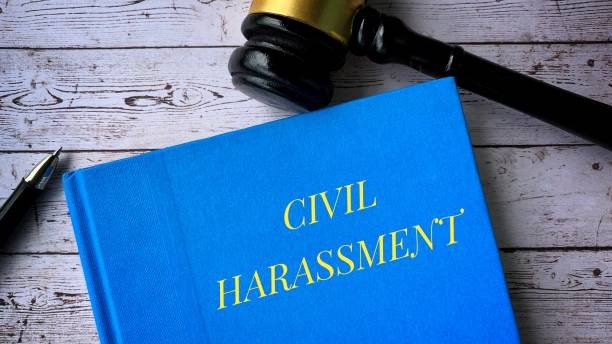How Do I Get a Civil Harassment Restraining Order in California?
A civil harassment restraining order is a court-issued order intended to protect individuals from harassment, stalking, threats, or violence by someone who is not a close family member or romantic partner. This can include neighbors, roommates, distant relatives, or even strangers. California law defines harassment as unlawful violence, credible threats of violence, or repeated behavior that seriously alarms, annoys, or harasses someone without any valid reason. If someone repeatedly contacts or follows you, makes threats, or causes emotional distress, and the relationship does not fall under domestic violence statutes, you may be eligible for a civil harassment restraining order. Understanding the scope of what this legal tool covers is the first step in determining whether it is appropriate for your situation.
Filing the Necessary Paperwork to Start the Process
The process to obtain a civil harassment restraining order in California begins with filing a series of forms at your local courthouse. The primary form is the Request for Civil Harassment Restraining Orders (CH-100). You’ll need to provide detailed information about the harassment you’ve experienced, including dates, times, and specific incidents. Supporting documents such as screenshots, text messages, emails, photographs, or witness declarations can significantly strengthen your case. It’s critical to be clear and specific in your descriptions to help the court understand why you’re seeking protection. Once you’ve completed the paperwork, you must file it with the court clerk, who will provide a court date for your hearing. At this stage, you may also request a temporary restraining order if you believe you are in immediate danger.
Serving the Restraining Order Papers on the Other Party
After filing, California law requires that the person you’re seeking protection from (the respondent) be properly notified about the restraining order and the upcoming court hearing. This is done through a formal service of process, which must be carried out by someone over 18 who is not involved in the case. The papers served must include a copy of the filed forms, any temporary restraining order the court granted, and notice of the hearing date. Proper service is a crucial step; if the respondent is not served, the court cannot proceed with a permanent order. Law enforcement or a registered process server can perform the service, and once completed, a Proof of Service form must be filed with the court to confirm that the respondent received the documents.
Presenting Evidence and Attending the Court Hearing
The court hearing gives you the chance to explain your situation to a judge and ask for a permanent civil harassment restraining order, which may remain in effect for up to five years. During the hearing, you’ll be asked to explain the nature of the harassment, provide evidence, and possibly call witnesses to support your claims. The respondent also has the right to attend and present their side. It’s important to stay calm, be respectful, and focus on the facts. Bring copies of any supporting documentation you have, as well as multiple copies for the court and the respondent. If the judge finds sufficient evidence of harassment, they will issue a civil harassment restraining order outlining the specific protections granted, such as prohibiting contact, staying a certain distance away, or moving out of a shared location.
What Happens After the Restraining Order is Granted
Once a civil harassment restraining order is issued, it becomes a legally enforceable court order. The respondent must comply with all the conditions outlined in the order. Violating any terms can result in criminal charges, including arrest and possible jail time. You should keep a copy of the order with you at all times and consider giving copies to places like your workplace or school if necessary. California law also mandates that the restraining order be entered into a statewide database accessible by law enforcement, which ensures that officers can act quickly if the order is violated. If circumstances change or the harassment continues, you can return to court to request modifications or extensions to the order. The protection offered by a civil harassment restraining order can provide peace of mind and legal recourse when dealing with persistent and threatening behavior.
Conclusion
Pursuing a civil harassment restraining order in California involves careful preparation, proper legal procedures, and a commitment to following through on court requirements. At The Nieves Law Firm, the team understands how stressful and overwhelming harassment situations can be. Whether you’re filing for the first time or seeking to enforce an existing order, having guidance through the legal process can make a critical difference in securing your safety and peace of mind. If you believe you’re being harassed and need legal protection, don’t hesitate to learn more about your rights under California law.







